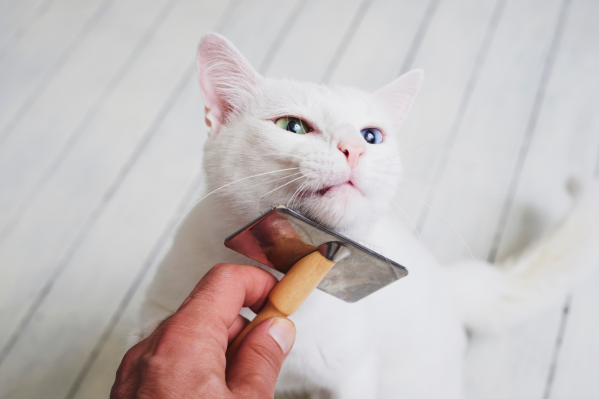Hairballs in cats are a common problem, especially in long hair cats or cats that suffer from allergies. But interestingly enough, most cats will never have a problem with hairballs clinically (where a veterinarian has to intervene)—in 20 plus years as a practicing veterinarian, I've have had to treat maybe 10 cats for hairballs. They're more a nuisance for pet parents to deal with.
Thought it's rare to need veterinarian intervention, it's important for pet parents to understand the causes of hairballs in cats and how to treat and prevent them.
Causes of hairballs in cats
Trichobezoar is the scientific name for a hairball—more specifically, it's a mass of undigested hair or fur.
Long hair cats are the most common cats that will experience a problem with hairballs. Just from basic grooming, long hair cats can develop hairballs. For short hair cats, it most commonly develops from a skin problem. These skin problems can include allergies, psychogenic alopecia (your cat just licking hair for no medical reason), or recurrent skin infections. Long hair cats can suffer from these conditions as well, and when it comes to alopecia problems specifically, long hair cats tend to experience them much worse.
How to treat cat hairballs
When a cat is clinically affected by a hairball, you might be wondering how we find that out in a veterinary hospital. Most of the information we get is from the pet parent when they detail their cat's history. Hair by itself does not show up on a radiograph, and there is no blood test that can diagnose a hairball.
There are, however, common symptoms of a hairball. These include GI symptoms such as vomiting hair or passing hair in the stool. In addition, if your cat is experiencing hair loss, then hairballs will be on the list of things your vet will look for.
Treatment for cat hairballs depends on what symptoms the feline is experiencing. For vomiting, the vet will likely use some type of Laxatone supplement to help dissolve the hair and fluid therapy to help your cat rehydrate. For constipation, we use a lot of the same treatment, using fluid therapy to over hydrate the pet, Laxatone, and occasionally, we need to do an enema to remove the stool with hair.
How to prevent cat hairballs
Pet parents can help prevent cat hairballs by feeding their feline friend a diet with Laxatone in it, or using Laxatone itself. If you read the package of Laxatone, it says to put it on the cat's paw, but they ingest hair doing that, so it's better to put it on their food or make the cat eat it off your finger. But remember, it's always best to consult a vet before feeding your pet a new diet or medication.
Another way to prevent cat hairballs is to keep your cat hydrated. If they're hydrated, then GI motility is higher.
If you have questions or concerns about cat hairballs, the Vet Pros at Pawp are here to help 24/7.
